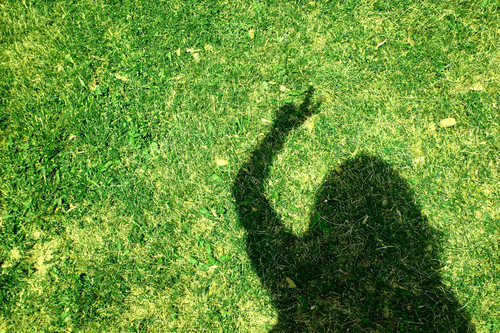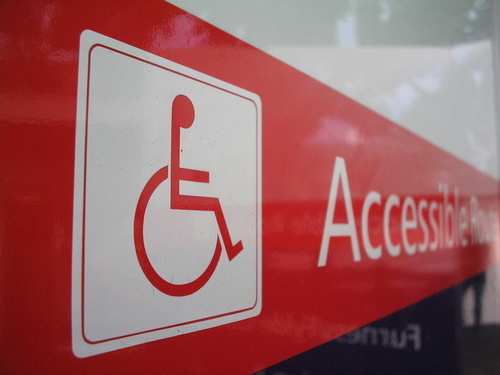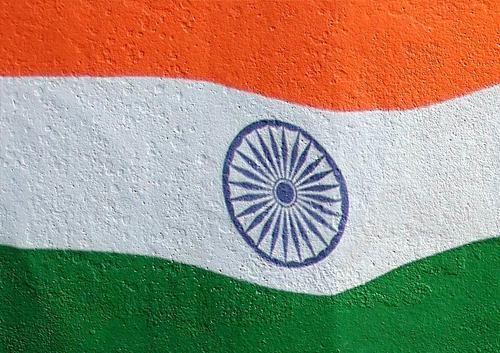Peace Camps
Human rights violations can often be committed during times of war. It, therefore, makes sense that activists would specifically protest against armed conflict. One way to do this is by setting up a peace camp. They tend to be created within areas associated with the military. Alternatively, the base could be close to government buildings.
Over the years, there have been several high profile peace camps. For example, Sky News covered a man who set up a tent outside of the Houses of Parliament in order to bring attention to the Iraq War. Peace camps have existed since the 1920s. They came to prominence in the early 80s. The Greenham Common Women’s Peace Camp stands out as a famous example.
They are particularly popular within the United Kingdom. People who are against the proliferation of nuclear weapons will often set up camps near missile and submarine bases. Creating a peace camp is a serious commitment. The person will need to live there for extended periods of time. This can mean giving up their job and family life. However, it is also an excellent method for visually signifying displeasure at the government.
Protest Methods
When fighting for human rights issues, it is common for advocates to engage in some form of protest. Many people utilise non-violent methods to help spread their message. Doing so ensures that opponents do not accuse them of rioting. There is a surprising number of ways to get a point across peacefully.
A typical example is marching. Every year numerous organisations take to the streets in order to protest against human rights violations. International journalism organisations such as Reuters tend to cover these gatherings. In addition, it is common for protestors to hold signs and posters. Doing so will give the general public vital information about their cause.
Alternatively, the protestors could decide to hold a sit-in. This is a popular act of civil disobedience where people sit within a specific area. It was utilised effectively by the 1960s civil rights movement. Sit-ins are a great way to spark sympathy among the public.
Another option is to engage in hunger strikes. The protestor will stop eating until their demands are met. While this is effective, it can also be hazardous to the person’s health. Hunger strikes create a significant amount of pressure. In the past, they have proven to work in effecting societal change.
In recent years online activism has become more popular. It is ideal for people living in areas where anonymity is vital for their safety. Advocates can create social media pages containing information about human rights violations. They could even recruit new members to their organisation via the internet.
Disability Rights
Even though great strides have undoubtedly been made, there are still numerous barriers that disabled people have to contend with. Therefore, the disability rights movement is focused on securing equal opportunities for those with severe limitations.
Accessibility is a significant issue for these types of organisations. So too is the right to have independent lives. There has been a push for disability ID cards to help people receive a better service from businesses. This is due to the fact that a lot of firms are solely focused on able-bodied customers.
In the past, there were far fewer job opportunities for the disabled. This is beginning to change thanks to the advocacy of employment equity. Many countries have started to realise that infrastructure and transportation need to be improved in order to ensure the safety of disabled people.
The fight for disability rights is surprisingly complex. These people can be marginalised by their communities in a wide range of different ways. Some believe the key is adjusting existing systems so that the disabled can be integrated into them. Others argue that there needs to be much more radical societal changes.
The Death Penalty
One of the critical aspects of human rights activism is abolishing the death penalty. Capital punishment is the state-sanctioned killing of citizens who have been convicted of serious offences. The most common ones tend to be murder and treason. Throughout much of human history, the death penalty was an accepted practice. However, in recent decades there has been a big push towards enforcing more humane punishment methods.
Throughout the world, a number of nations still have the death penalty for certain crimes. This includes the US, China, Saudi Arabia, Japan, Egypt and Iran. Currently, over fifty separate countries utilise capital punishment as a deterrent. However, 108 other states have decided to altogether abolish it. More than half of the entire population of the world lives in places where the death penalty is enforced.
It is a highly controversial topic and the core reason why many people choose to become human rights activists. The views of capital punishment will vary greatly depending on each individual culture and ideology of a region. The Council of Europe is one of the leading organisations seeking to end it. In recent years the United Nations has also called for an international moratorium on executions.
Malala Yousafzai
Even though many people associate the fight for human rights with the 20th century, it is still a serious modern problem. In recent years, several advocates have campaigned for the education of young women in particular. A good example is Malala Yousafzai.
She became the youngest person to ever win the Nobel Peace Prize. This Pakistani woman has inspired a generation of women thanks to her brave story. It was covered by media outlets such as the Guardian and drew attention to Taliban oppression within her country.
Today she is known mononymously as Malala. She grew up in Swat Valley within Khyber Pakhtunkhwa. Girls were sporadically banned from school while the Taliban were in power. Her family were focused on educational activism and ran several schools within the local region. Malala was inspired by Benazir Bhutto and Muhammad Ali Jinnah at a young age. She cited them as crucial role models.
From the ages of 11 and 12, she wrote a BBC blog detailing what life was like during Pakistan’s Tehrik-i-Taliban occupation. A year later, a documentary was made about her. The activist Desmond Tutu nominated Malala for the International Children’s Peace Prize.
Her story gained even more attention after an assassination attempt. While riding on a bus in October 2012, she was shot in the head by gunmen in retaliation for her human rights activism. Malala survived after being transferred to Birmingham, UK, for treatment. The shooting led to an increased outpouring of support for her cause. Today Malala Yousafzai is considered one of the most influential living individuals for promoting education rights and feminism. She continues to give public speeches to help spread her message.
Malcolm X
When people list important figures in the civil rights movement of the 1960s, they will focus on Martin Luther King Jr. and Rosa Parks. However, Malcolm X is another crucial individual worth discussing. He gave powerful public speeches promoting black empowerment. The American Muslim community, in particular, often cite Malcolm X as an important person for advocating their rights.
He was born in 1925 and spent the majority of his childhood within the foster care system. In 1946, he was sentenced to 10 years in prison for larceny. While incarcerated, he converted to Islam. After being granted parole in 1952, Malcolm X rose to become the public face of the Nation of Islam. He would continue to serve this organisation for the next 12 years. His speeches would often have a more radical tone compared to Martin Luther King Jr. He criticised the ineffectiveness of the mainstream civil rights movement.
Malcolm X is often considered a controversial figure because he did not advocate for non-violence or racial integration. However, many people also celebrate him for his messages about increasing the rights of African Americans. Those who follow the Muslim faith sometimes cite him as an inspiring figure within their religion.
While working for the Nation of Islam, Malcolm X focused on improving the welfare of poor African Americans. He recognised the epidemic of drugs within his country. As a result, he promoted free rehabilitation programmes. During his lifetime, Malcolm X attained a hero status. Despite this, there was also concern within the government due to his views that black Americans should arm themselves. During the 1950s, the FBI started surveillance on him.
Like many human rights activists, the life of Malcolm X was tragically cut short. In the 1960s, he left the Nation of Islam after becoming disillusioned with its leader Elijah Muhammad. After a trip to Mecca, he decided to found his own Muslim organisation. He would continue to make speeches against the Nation of Islam and repeatedly received death threats. In February 1965, Malcolm X was assassinated by two members of this organisation. His murder shocked people around the world. This led to a resurgence in the popularity of his posthumous speeches. Consequently, many more people know about Malcolm X now compared to in his lifetime.
Mahatma Gandhi
Throughout history, there have been numerous individuals who tried to fight for the rights of others. Mahatma Gandhi is considered one of the most critical political ethicists of the 20th century. He is well known for promoting acts of non-violent resistance while campaigning for the rights of Indian citizens. One of Gandhi’s main goals was to gain Indian independence as the country was ruled by the British empire at the time.
Gandhi had a significant impact on society during his lifetime. He was assassinated in 1948, leading to a day of mourning in India. More than one million people joined his funeral procession, which stretched for five miles. The influence of Gandhi is still felt today. In modern times there are even shrines dedicated to this iconic human rights activist. Protesters all over the world employ his methods while campaigning for societal change.
He was born Mohandas Karamchand Gandhi in 1869. It was not until 1914 that the title of Mahatma was given to him. The meaning of this word has been cited as both “venerable” and “great-souled”. It is fair to say that India was very different before Gandhi focused on improving human rights in the country. Suppose readers use Wikipedia to research pre-Gandhi India. In that case, they may notice that the majority of citizens were dominated by British rule. One of his critical missions was to turn India into a self-ruling nation. He also created campaigns aimed at lowering poverty, increasing the rights of women and easing ethnic tension.
Gandhi came from a Hindu family and was raised in Gujarat. During his early life, he trained to be a lawyer, passing the bar when he reached the age of 22. After unsuccessful attempts to start a law business within India, he moved to South Africa. This became his home for 21 years. This country helped to foster his affinity for non-violent protest. He returned to his native land at the age of 45 in order to organise resistance movements within peasant communities. At the time, excess land tax was negatively impacting many farmers and urban labourers. Gandhi focused on improving the rights of these workers.
Towards the end of his life, he finally got to see India gain independence. He then worked hard to reduce violence between different religious communities. Today he is often referred to as the Father of the Nation. He changed the lives of ordinary Indians forever.







